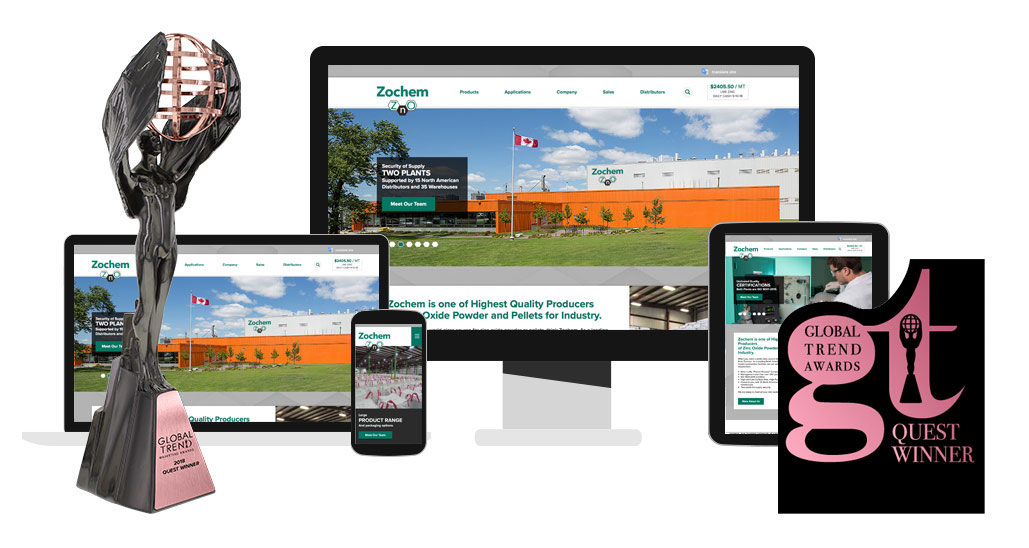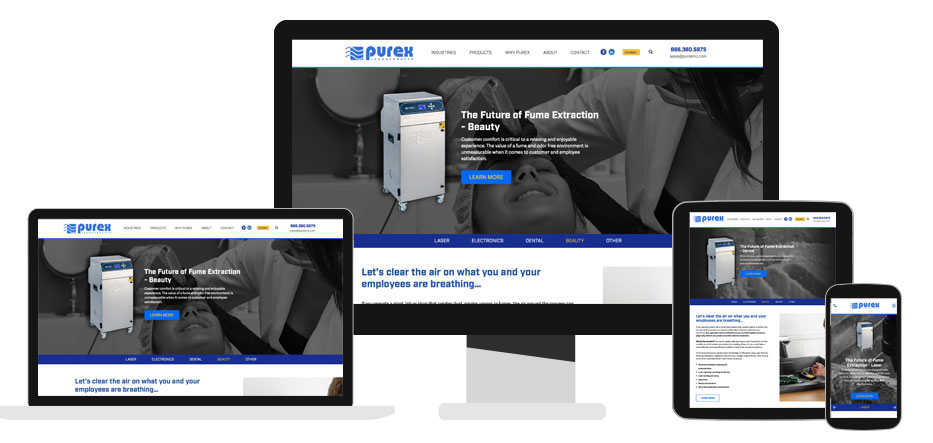Although it can be easy to forget, the first job of your business website isn’t to look good – it’s to attract visits and help you win new customers or sales opportunities. That’s why, when designing a new site or looking for design and development improvements to an existing web presence, we think in terms of visitor value.

A lot of attention gets paid to things like search engine optimization and pay-per-click (PPC) advertising. That makes sense. Getting more people to your pages is a good way to increase leads and sales. However, there is another side to the equation, too. By following proven design principles you can actually keep buyers engaged, generate conversions, and ultimately make every visit to your website worth more.
Let’s look at seven ways we help our clients to squeeze the biggest possible value from every new website visit…
#1 Start With the Important Info and Details First
Every newspaper editor and designer in the world knows the simple rule of layouts is to keep the most pressing stories “above the fold” where a passing pedestrian is likely to notice them. In other words, they want a person walking by on the street to see a headline and be so intrigued that they pick up a copy of the paper.
The same principle applies in the digital age. For one thing, you only have a few precious seconds to impress a buyer before they take their attention elsewhere. And for another, Google likes to see important search terms put into headlines and opening paragraphs. More visitors will see the top of your website than potentially any other part of your business, so make that real estate count.
#2 Keep Your Viewer’s Field of Vision Clean
Customers and clients always agree on one thing: they like designs that are “sleek” and “modern.” On the surface, those words can have many different meanings and connotations, but they almost always translate to clean pages with minimal distractions.
It can be tempting, both for designers and marketers, to cram just one more thing onto a web page. The irony, though, is that less is more. When your visitor has a clean field of vision as they scroll through your site, they will feel less stressed, less pressured, and more engaged. Focus on what your website is about, along with any major conversion goals you have, and then remove anything that gets in the way.
#3 Be Creative and Original, But Don’t Be Confusing
Creativity can be a tricky topic when it comes to business web design. On the one hand, you certainly need your development team to look for ways to help you stand out in a crowded market. You don’t want your website to look like all the others, or to get lost in a sea of competitors. But on the other hand, too much innovation can actually hurt usability.
When the format of your pages or the structure of your navigation menus starts to confuse people, then visits to your site are going to be much shorter. Visitors aren’t going to convert into leads or sales because they become frustrated in their search for solutions. When in doubt, stick with variations on web design staples, or at least test offbeat ideas thoroughly before overhauling your website with an unusual concept.
#4 Grab Attention the Easy Way
You probably spend most of your day and conscious thought about things like customer acquisition, quarterly budgets, and other business challenges. However, the older parts of your brain are still drawn to faces, food, and other obvious or emotional visual cues.
You can use this subconscious tendency to your benefit by making your website more attractive to the human eye. Images of human faces, bright colors, and animals register in our minds thousands of times faster than text blocks do. You don’t notice this consciously as you surf the internet, but your attention is constantly being drawn to these kinds of elements. Sprinkle them on your website and you’ll notice that visitors will hang around longer.
#5 Guide Visitors to Important Visual Elements
We don’t just subconsciously look for objects that would appeal to our hunting and gathering ancestors. We also search our environments (digital or physical) for clues to context, meaning, and even danger.
In the world of web design and marketing this means you can point visitors towards certain prompts or ideas in ways that are both subtle and obvious. Subtle versions involve having the human faces you put on your website tilted towards headlines and calls to action. The more overt method involves using cues like arrows to direct them to elements on your page that you don’t want them to miss. You might be amazed at just how effective these techniques can be for moving prospects through your site and boosting conversions.
#6 Be Discriminating In the Way You Offer Links
There is a whole science of linking within the web design industry. Everyone wants inbound links that improve search visibility, and “best practice tips” about when and where to link between product pages, blog posts, and other parts of your site are on hundreds of blogs.
What sometimes gets lost in the discussion is the reality that fewer links can be better than more. You never want to send someone away from your website without having a very good reason, of course. And even when it comes to internal links and menus, you should be careful to direct visitors only towards resources that further their knowledge, represent natural next steps, or pertain to closely-related topics.
#7 Be More Precise and Descriptive With Your Content
So far we have focused on visual and tertiary elements that keep visitors on your website and moving from one page or topic to another. However, it’s worth remembering that you need the words on your pages to actually transmit information and emotion if you’re going to expect potential customers to take action.
Far too many businesses rely on generic headings and messages (like “about us” and “our products”) when they could be more specific and descriptive. While you don’t want to stray too far from convention and confuse visitors, anything you can do to add information or appeal to search engine spiders can be helpful. So, look for ways to be more complete and descriptive when filling in website text, particularly when it comes to headings, subheadings, page titles, and link identifiers.

Is Your Web Design Team Working Smart?
If you feel like there hasn’t been enough focused thought put into your website and online marketing campaigns, it’s time to make a change. Our team has the combination of technical skills, creativity, and real-world business growth knowledge needed to make an impact in your bottom line. Why settle for anything less?
Contact Weblinx today at 630-551-0334 x1 to schedule a free consultation and see what we can do for you!